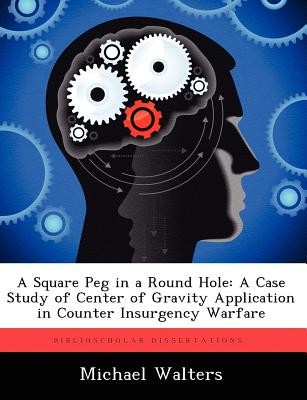
- We will send in 10–14 business days.
- Author: Michael Walters
- Publisher: BiblioScholar
- ISBN-10: 1249579007
- ISBN-13: 9781249579007
- Format: 18.9 x 24.6 x 0.7 cm, softcover
- Language: English
- SAVE -10% with code: EXTRA
Reviews
Description
Effective planning and strategy development are dependent upon reliable, relevant, and accurate methodologies and practices. Critical to planning effective strategies is knowing the enemy, and understanding its elemental aspects. Non-state actors and insurgent activity have increased globally in scale, lethality and reach. At the same time, the frequency of state-on-state and major theater conflicts has declined. These trends necessitate a more fundamental understanding of who these individuals and groups are, why they do what they do, and how best to develop counter-strategies. Traditional military planning processes begin by identifying the enemy CoG, or hub on which all power is derived. The question is whether senior civil and military leaders are best served, and if counterinsurgency (COIN) strategies are most effective, utilizing a modeling paradigm historically based on conventional warfare and state-based actors. Underlying questions related to the research question are: Is there a CoG in an insurgency? Does this CoG differ from those of traditional state-based opponents? How does one identify a CoG in an insurgency, and once identified, how is it best dealt with? These questions, and the role of CoG in COIN, played central characters in the failing state of Iraq following President Bush's announcement of the end of major combat operations. Traditional and institutional perspectives and biases influenced civil and military leaders' assumptions about Iraq, the strategic environment, the people, and the enemy. In turn, CoG analysis, application, and assessment were skewed. The case study of this thesis illustrates the evolution of the perception and application of CoG in the COIN effort in Iraq by the different commanders charged with developing a successful, long-term campaign strategy. This thesis asserts that, by better understanding whether CoG is effective in understanding and combating insurgents and armed groups, and perhaps questioning i
EXTRA 10 % discount with code: EXTRA
The promotion ends in 18d.07:44:11
The discount code is valid when purchasing from 10 €. Discounts do not stack.
- Author: Michael Walters
- Publisher: BiblioScholar
- ISBN-10: 1249579007
- ISBN-13: 9781249579007
- Format: 18.9 x 24.6 x 0.7 cm, softcover
- Language: English English
Effective planning and strategy development are dependent upon reliable, relevant, and accurate methodologies and practices. Critical to planning effective strategies is knowing the enemy, and understanding its elemental aspects. Non-state actors and insurgent activity have increased globally in scale, lethality and reach. At the same time, the frequency of state-on-state and major theater conflicts has declined. These trends necessitate a more fundamental understanding of who these individuals and groups are, why they do what they do, and how best to develop counter-strategies. Traditional military planning processes begin by identifying the enemy CoG, or hub on which all power is derived. The question is whether senior civil and military leaders are best served, and if counterinsurgency (COIN) strategies are most effective, utilizing a modeling paradigm historically based on conventional warfare and state-based actors. Underlying questions related to the research question are: Is there a CoG in an insurgency? Does this CoG differ from those of traditional state-based opponents? How does one identify a CoG in an insurgency, and once identified, how is it best dealt with? These questions, and the role of CoG in COIN, played central characters in the failing state of Iraq following President Bush's announcement of the end of major combat operations. Traditional and institutional perspectives and biases influenced civil and military leaders' assumptions about Iraq, the strategic environment, the people, and the enemy. In turn, CoG analysis, application, and assessment were skewed. The case study of this thesis illustrates the evolution of the perception and application of CoG in the COIN effort in Iraq by the different commanders charged with developing a successful, long-term campaign strategy. This thesis asserts that, by better understanding whether CoG is effective in understanding and combating insurgents and armed groups, and perhaps questioning i


Reviews